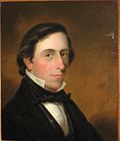SECTION 1. Be it enacted by the Senate and House of Representatives of the State of Michigan, That the governor is hereby authorized and directed to nominate, and by and with the advice and consent of the senate, to appoint a competent person, whose duty it shall be to make an accurate and complete geological survey of this State, which shall be accompanied with proper maps and diagrams, and furnish a full and scientific description of its rocks, soils, minerals, and of its botanical and geological productions, together with specimens of the same; which maps, diagrams, and specimens shall be deposited in the State library, and similar specimens shall be deposited in such literary and scientific institutions as the governor shall direct; and the governor is further authorized to appoint, from time to time, as the exigencies of the case may require, competent persons to act as assistants under the directions of the geologist.
SECTION 2. A sum not exceeding $3,000 for the year 1837, a sum not exceeding $6,000 for the year 1838, a sum not exceeding $8,000 for the year 1839, and a sum not exceeding $12,000 for the year 1840, is hereby appropriated to defray the expenses that may be incurred under this act, which sums shall be paid out of the treasury from any money not otherwise appropriated, at such times and in such sums as the governor may direct; and an account of all the expenditures of each year shall be annually reported to the legislature.
SECTION 3. The geologist appointed under the provisions of this act shall make a report annually to the legislature, on the first Monday of January, in each year, setting forth generally the progress made in the survey hereby authorized.
- Approved February 23, 1837.





